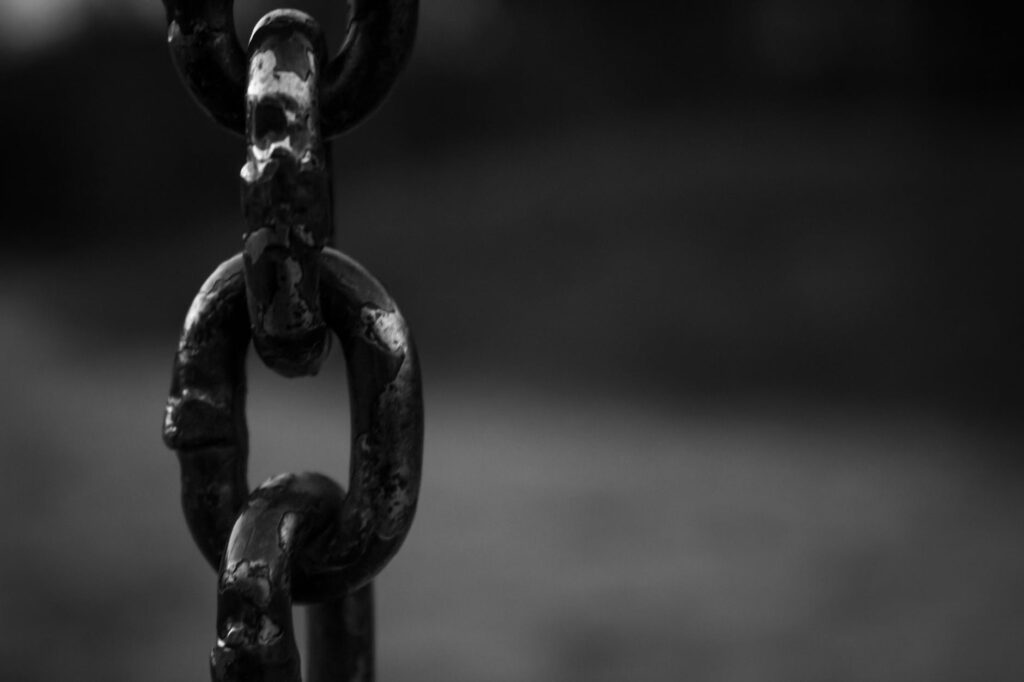
At school, in documentaries and in films – we have all heard about “slavery” somewhere. Trafficking and trade of humans is part of the history of many of our societies. The prohibition of slavery is one of the most important achievements in the fight for human rights and a free society; however, contrary to popular belief, the abolition and legal regulation did not put an end to human trafficking. In fact, this is not at all the case. Today around 45 million people – more than ever before – are currently estimated to be victims of human trafficking. Despite this prohibition, illegal exploitation can still be found in various forms across the globe. Originating centuries ago, human trafficking is an atrocity that has occurred throughout history and can still be found in our societies today.
ANCIENT TIMES: THE HISTORY OF SLAVERY

The human trafficking is by no means a thing of the past. To this day it has not been stamped out. The late Kofi Annan, a former Secretary-General of the United Nations, also knew that despite centuries of efforts, slavery has not been completely eradicated in our modern world. Many forms of slavery still exist today, including forced labor, child labour, and slavery that is perpetuated for ritual and/or religious purposes. The world is now grappling with a new form of slavery, human trafficking. (Kofi Annan, “Human Trafficking is a New Form of Slavery,” Declaration on International Day for the Elimination of Slavery, December 2, 2005, New York). How could this happen? How could humans become a commodity?
Slavery had already established itself as part of the social dynamic of communities in ancient times. The wealthier a family was, the more slaves they kept in their household. These slaves were not perceived as people by the heads of the households, but were considered by the laws of the time as the property of these families and, as property, could only be released into freedom with the consent of these “owners” . Worse still, the offspring of slaves were born into slavery and were considered slaves from birth. In ancient Egypt slavery was considered normal and in ancient Greece, slavery was an important economic component. From work in the fields and construction work to domestic activities, many countries and civilizations were dependent on the work of slaves for all manner of important tasks. Despite their contributions, these people were treated as dispensable and exchanged, punished or killed at the will of their oppressors if they were disobedient.
This cruel behavior by no means occurred only in ancient Egypt and Greece. Probably the most famous story of human enslavement goes hand in hand with the so-called discovery of America by Christopher Columbus. The conquest of this continent was characterised by violence and suffering. Shortly after the arrival of the colonialists from Spain and Portugal, indigenous populations were enslaved and forced to work on plantations and in mines. What started as a journey to a new world, ended up as the beginning of the transatlantic slave trade.
MODERN AGE: THE BOOM IN THE TRANSATLANTIC SLAVE TRADE

Following the so-called discovery of America and the ensuing cultivation of sugar cane, the wheels for global slave trade and second largest slave trading period in history, had been set in motion.
The conquerors from Western Europe forced the indigenous population into labour on the plantations, but the diseases brought in by the colonialists quickly led to countless deaths among the newly enslaved men, women and children. How did the slave traders react to the large number of deaths? They had African slaves brought to America by ship to alleviate labour shortages. This transatlantic slave trade led to the creation of a trade triangle between Europe, America and Africa. In Europe, ships were loaded with textiles and rifles, then set sail for Africa. There, the materials were exchanged for slaves who in turn were brought to America. When they arrived in America, the African slaves were handed over to the colonialists who lived there. Following this, the ships were fully loaded with the yields of the plantations as well as gold and silver, and made their way home to Europe. These slaves did not only toil in the plantations, but were forced to work in mining, war and general service industries as well – the use of slave labour was not limited to one job or to one continent, but was far wider. This trade triangle, we now know, was just the beginning. What followed was international trade of humans that extended across countries and continents and since slave revolts were often rapidly extinguished, the fight for the abolition of slavery would not bear fruit until several centuries later.
HUMAN TRAFFICKING: THE NEW FORM SLAVERY

Much has happened with regard to slavery in the last few centuries. Agreements were made, declarations signed and conventions brought into existence; however, the eradication of slavery remains elusive and is not yet in sight. Despite the prohibition of slavery and human trafficking or the European Convention on Human Rights, one remains true: human trafficking, forced prostitution, child trafficking and bonded labour are today’s forms of slavery and remain very active and prevalent. Human trafficking was determined to be the form of crime with the highest rate of growth in the early 2000s. With estimated profits of around $32 billion, trafficking in humans is the third largest source of criminal proceeds. This number shows that when it comes to human trafficking, but also slavery and its associated consequences, we still have a long way to go. Fortunately there is light at the end of the tunnel, and we at Hope For The Future want to do our part to reach the end of this tunnel. We are supporting the fight against human trafficking, by helping people who are affected by it to escape. Everyone has a right to a life in freedom and dignity!
